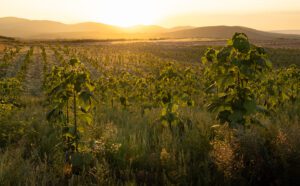Cultivating Healthy Kiri Trees: The Soil Essentials

In the pursuit of thriving Kiri tree plantations, understanding and providing suitable soil conditions are fundamental. Alongside choosing a high-quality and robust variety, the right soil conditions play a pivotal role in ensuring the successful growth of Kiri trees. Here, we emphasize that Kiri trees exhibit poor growth or no growth at all on unsuitable soil sites. Conversely, optimal soils contribute to the rapid and high-volume production of wood with exceptional quality characteristics.
Ideal Soil pH: Striking the Right Balance
The successful growth of Kiri trees encompasses a relatively broad pH range. However, extremes in pH, whether too high or too low, can severely limit nutrient availability, resulting in nutrient deficiencies. Striking the right balance in soil pH is crucial for unlocking the full potential of your Kiri tree plantation.
Nutrient Requirements: Nourishing Kiri Trees for Success
The nutrient content in soils varies significantly based on soil type and previous use. Conducting a thorough soil analysis as part of the site evaluation is done to determine nutrient elements that may be insufficient. In addition to assessing NPK content, it’s crucial to analyze micronutrient levels. Deficiencies in essential micronutrients can lead to significant growth issues, but fret not – our team is ready to apply effective fertilization strategies.
Optimal Soil Structure: Building the Foundation for Growth
Drawing on years of global soil evaluation, we share a vital piece of knowledge with our customers: Kiri trees thrive in deep, loose, and well-ventilated soil. This type of soil promotes healthy root growth and accelerates wood growth. Caution is advised against waterlogged sites or those with clay or rock layers near the surface. When selecting your site, we analyze soil samples for grain size composition alongside nutrient levels and pH values for a comprehensive understanding.
While we acknowledge the efforts and costs involved in sampling and analysis, we emphasize that soil structure is a critical aspect to ensure the long-term success of your cultivation project. Unlike annual crops, where changes can be made the following year, healthy and vigorous tree growth over many years depends on the careful selection of the site – the key to achieving high yields.
